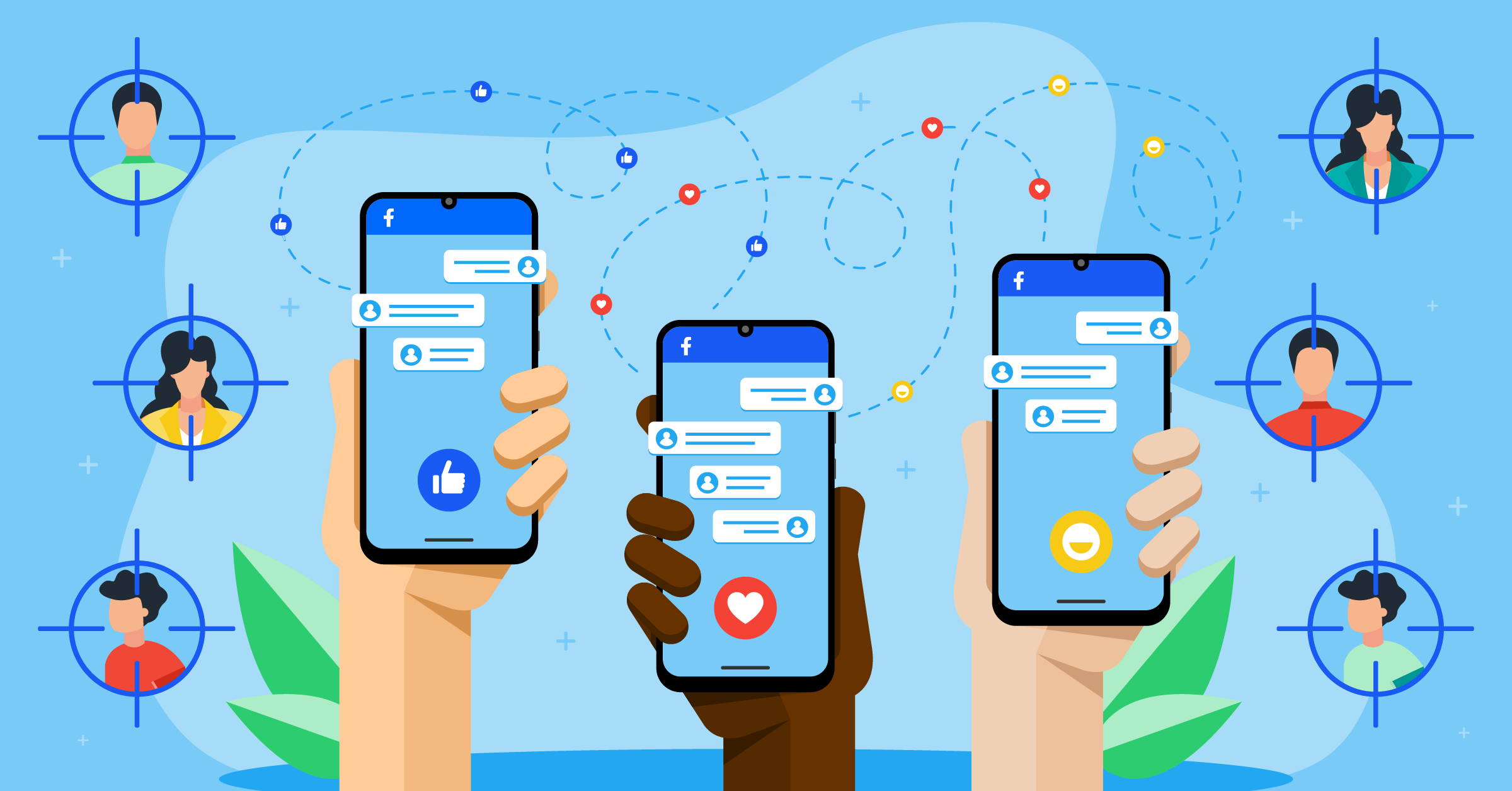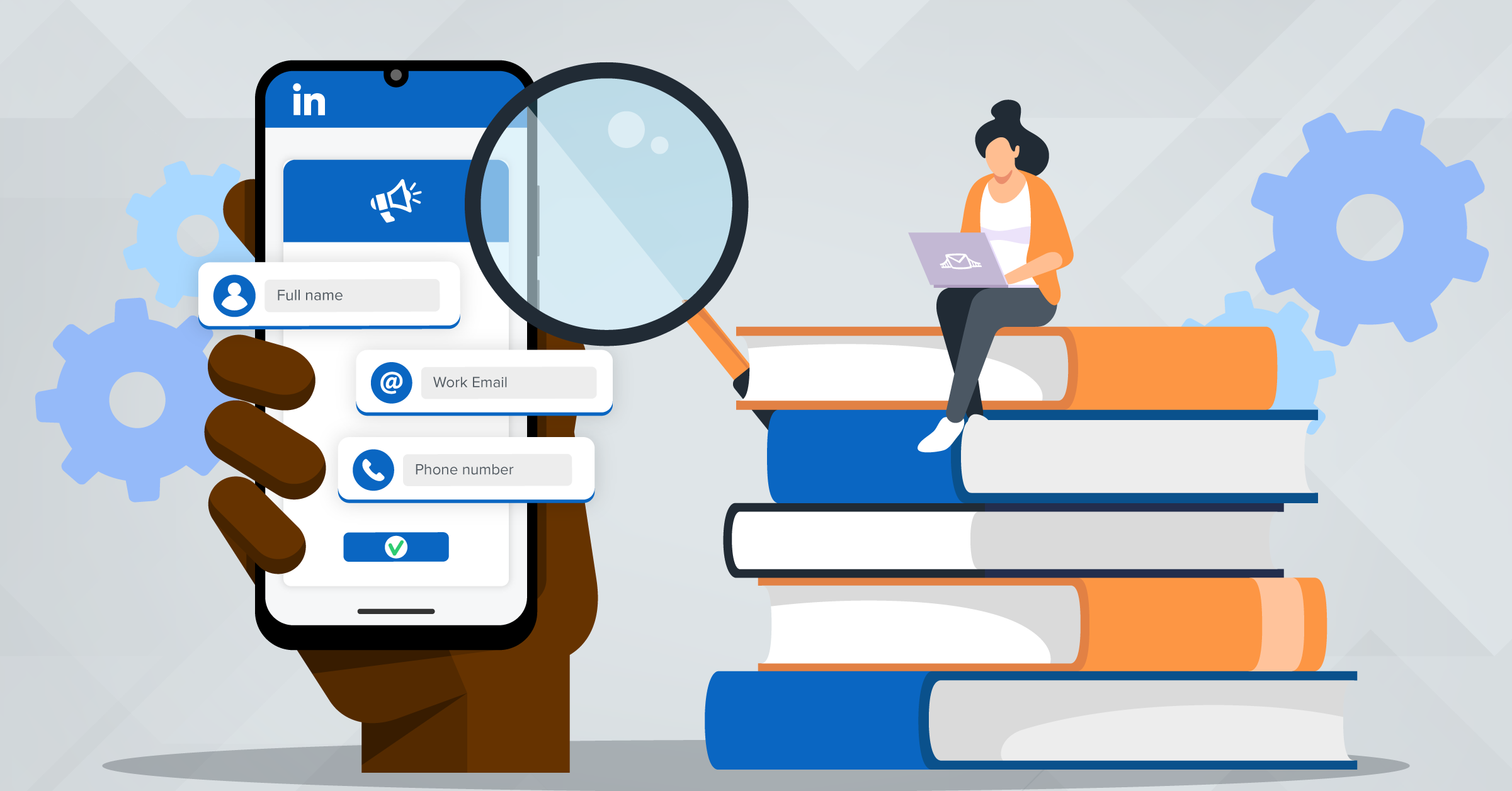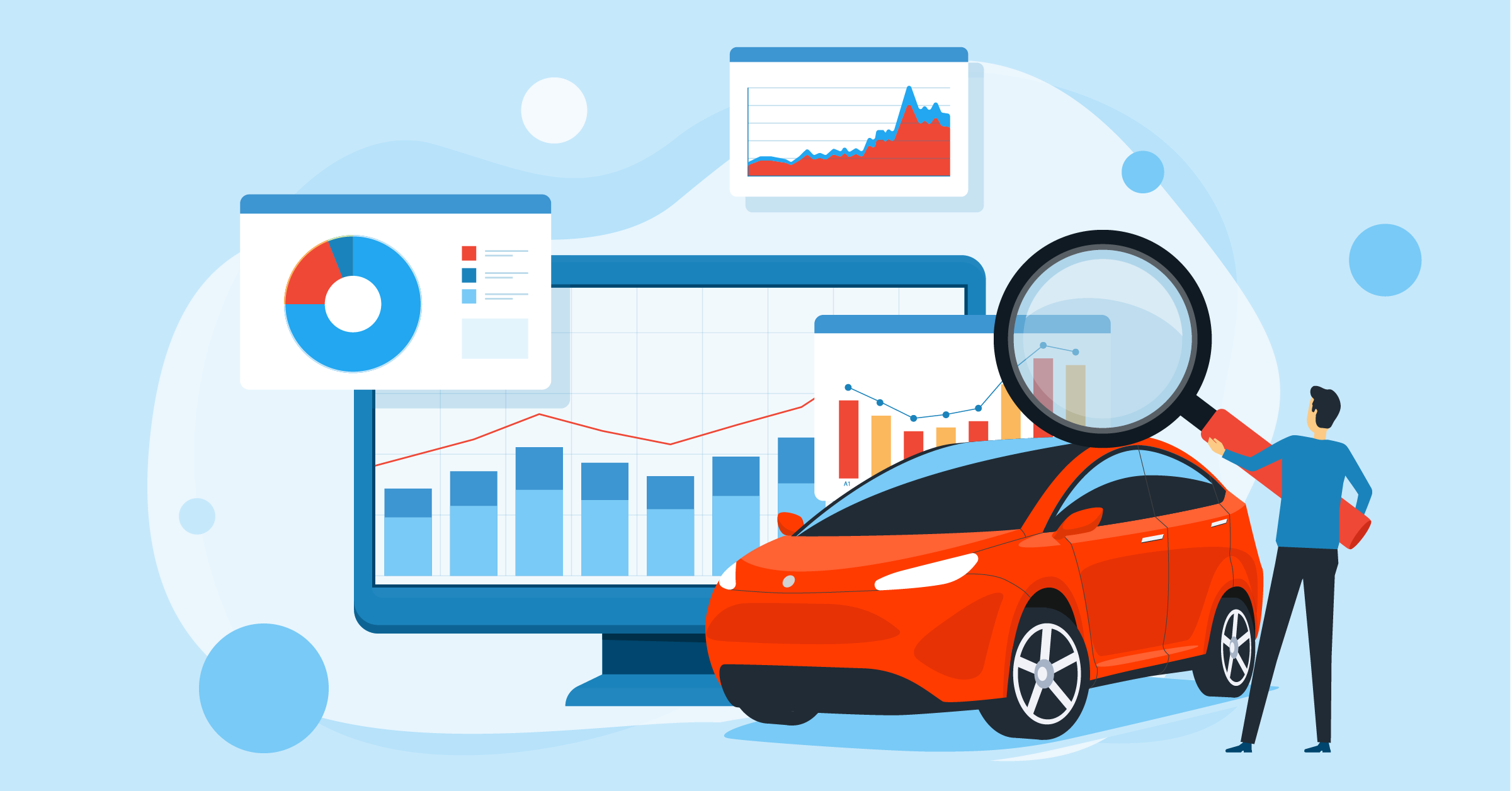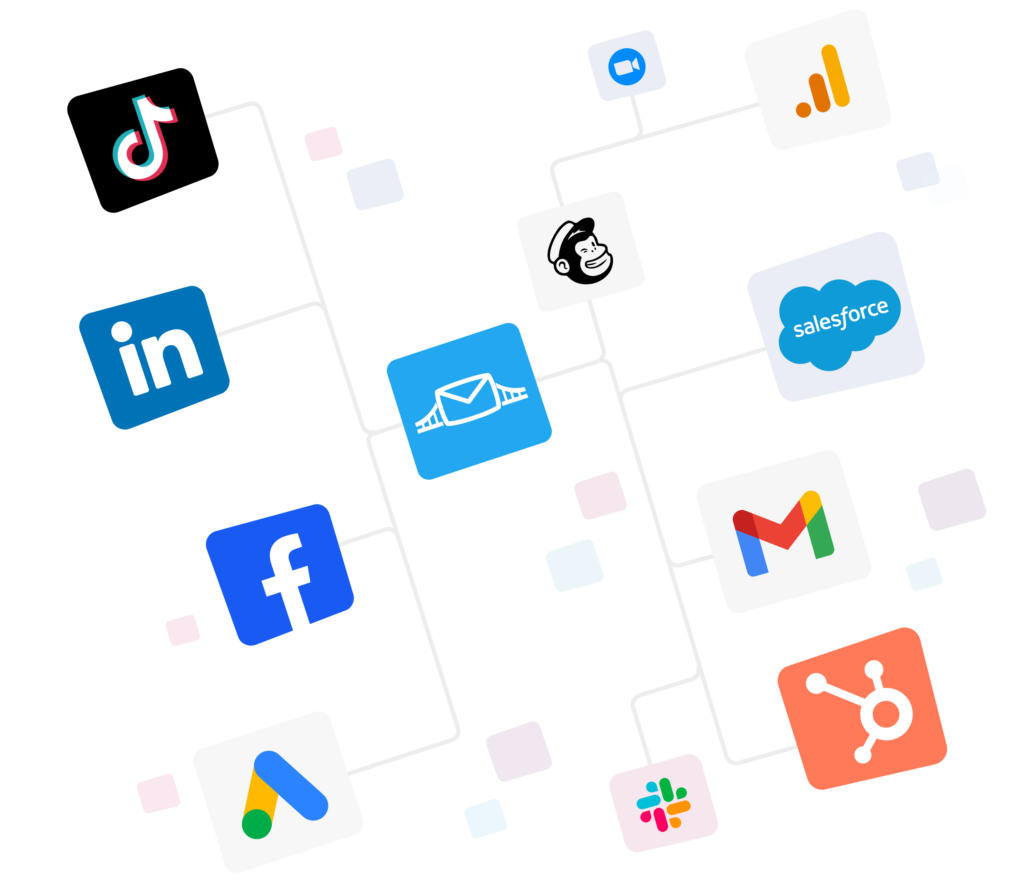
Everyone’s talking about hyper-personalized and highly-targeted marketing, but what do these terms really mean?
It all comes down to target audience behavior and the tools and tactics to effectively reach your ideal audience.
Tools like LeadsBridge’s Audience Targeting feature allow you to do just that.
You can use it to integrate your CRM or email lists with ad targeting tools on your favorite advertising platforms, automatically importing your contact lists and CRM segments to build more accurate audiences.
- What is a target audience?
- Types of target audience
- Target audience examples
- How to build a target audience
- Crafting an audience targeting strategy
- The benefits of audience-based marketing
- How to find my target audience: Best practices
- Automate your audience targeting: LeadsBridge integrations
- How to reach the ideal demographic audience
- Final takeaways
In this article, we’ll discuss what a target audience is and how to create one using different target audience examples.
Additionally, we’ll cover targeting must-haves you need in your toolkit, including automated integrations:
In this article, we’ll talk about what’s a target audience, how to create yours using different target audience examples and the best tools to use for targeting them.
What is a target audience?
A target audience is a group of people, defined by common traits, such as demographics and behaviors, who are likely to purchase your products or services.
To effectively pass your marketing messages to your target audience, you need to know who they are, their desires, and their interests.
Define your target audience through behavioral and demographic features such as age, gender, income, education, or location. The target audience can also be a large market or a niche market.
Types of target audience
There are many types of target audiences, according to what trait you’re interested in targeting. Target audience categories include:
- Cold audiences
- Warm audiences
- Customers
- Demographics
- Needs
- Attitudes & opinions
- Personality
- Lifestyles
- Fans
Remember, target audiences differ from one business to another.
Target audience examples
While there are several types and examples of custom audiences, you’ll also have to group them differently on each advertising platform.
1. Cold audiences
“Cold audiences” refers to the people who have never heard of your business. However, they are searching for information relevant to your service or product on Google to solve a problem.
Reaching out to this group of people helps you offer them your solution and even build a lasting business relationship that can lead to future sales. The most effective way to reach cold audiences is through ads on either Facebook or Google.
You can do this either by cooperating with ad agencies or through your in-house demand generation team.
The objectives of targeting cold audiences are:
- Build brand awareness
- Create a lasting business relationship
- Encourage interested users to become leads and customers
- Track users’ journeys on your website to learn more about them
A cold audience hardly knows about your business. That’s why collecting as much data as possible helps you build a relationship with them before you ask them to carry out any action (conversions).
2. Warm audiences
Warm audiences are people familiar with your business. They have visited your website at some point and are familiar with your products or services.
Generally, warm audiences are:
- Your website visitors.
- People who interacted with your content.
- People on your email list.
- Subscribers on your app.
- Your in-store visits.
However, these people have not, yet, shown interest in completing a purchase. So you’ll need to nurture and convert warm leads into customers.
You’ll need to segment them into two groups:
- Who merely visited your website.
- Who are leads (shown a stronger intent).
The best way to target your website visitors is through the Facebook Pixel. A code snippet that you install on your website to help you track the activities of your website visitors and micro conversions.
Then, use this data to create high-performing campaigns tailored to specific segments. For example, creating a custom audience of people who have not been to your website in the last 90 days.
Granular audience segments help increase the number of leads and sales because your ad’s message is more relevant to them.
Although the Pixel is a great tool, it has shortcomings. For example, Ad Tracking Prevention (ITP) systems and browsers can phase out third-party data entirely.
The solution to these restrictions is using Facebook Conversions API. This tool is specifically designed to create a feedback loop to Meta by feeding it data from your databases.
You’ll also have to connect your system with Facebook to facilitate this conversion tracking feature. You can do this through complex APIs or via automated data bridges that require no overhead.
Below are some of our most popular integrations with Facebook Conversions API.
Targeting people who are leads
Targeting your existing leads is easier than targeting cold audiences since they already know you and your product or service.
To create custom audiences from people on your email lists, or app subscribers, you’ll have to download their data from your CRM or autoresponder and upload it to Facebook.
Again, this can be done manually, which is heavily prone to errors, or automatically using LeadsBridge. Custom audience integrations streamline data imports from your email lists to Facebook and sync your audience lists in real time.
Here’s an example of targeting warm audiences from your website and leads on your CRM:

3. Customers
While this group has already made a purchase, you should overlook this target audience example.
Targeting and retargeting them again and again with similar offers, special promotions, product upgrades, and other tactics can turn them into repeat customers.
Using your customer target audience helps you upsell similar products or services and improve your customer lifetime value.How to target customer audiences
How to target customer audience
Customer Lifetime Value audiences work by uploading a customer list with spending figures for each customer to Facebook. The algorithm then sends the data to look for a similar audience to your highest value customers.
This data helps you to target the highest value customers and get better results.
Check out this example of targeting the customer audience by Figma:

Facebook Customer Lifetime Value helps you:
- Know the net profit you can visualize from each customer’s lifetime relationship with your company.
- Generate quality leads with high scores for your business.
- Increase conversions by targeting new subscribers with high Customer Lifetime Value with Facebook ads.
- Know your high-value customer age groups and search for a similar audience you can target with Facebook ads_ for a better return on investment.
- Reach people likely to become repeat buyers.
You can automatically create an audience by syncing Facebook with your CRM. In addition to a streamlined workflow, this data bridge helps track the value of the customers on your list.
4. Target demographic examples
Demographics describe a person or a group of people, such as age, gender, income, location, marital status, nationality, occupation, and education. Accordingly, demographic targeting is essential in creating hyper-personalized advertising campaigns and targeting the right audience.
Using demographics, you can focus your ads on the people most likely to make a purchase, avoid ineffective impressions, and hence, maximize your ROI. For instance, promoting baby food to teenagers will be a waste of your marketing dollars.
How to build a target audience
Creating a granular audience list calls for a strategy and the right tools.
Having a well-defined target audience profile will help you better understand who your customers are, what they are looking for, their fears, their wants and needs, and of course, how you can respond to those needs.
Here is how to build a target audience from scratch:
Create in-depth descriptions of your ideal customers
Before examining demographics, focus on what is most important to your customers and why they want to engage with your business.
Understanding your customers’ perspective on the selling points – as well as the pain points – of your product or service will help you determine the best approach to doing business with them.
Customer reviews and surveys are especially helpful, along with any other existing data or analytics about your current customers.
Look into your potential customers’ demographics
Now that you have outlined the wants and needs of your potential customers, you can start looking into their personal info to develop more details.
This is how you’ll learn the best ways to create a targeting campaign.
Meet potential customers where they’re hanging out
It doesn’t matter how great your products are, if your customers can’t find them and don’t know they exist, you will never make it.
To build awareness, you’ll need to determine where they spend their time online and understand what type of content appeals to them the most.
Crafting an audience targeting strategy
Now that you know what custom audiences are, it’s time to focus on an audience targeting strategy that brings in the results.
1. Expand your reach with Google’s in-market audiences
Google’s in-market audiences is an audience strategy that lets you target consumers who are researching your products or services.
Google Analytics helps you find the highest-performing affinity categories and in-market segments. Then, use this data to build different ad groups for each of your audiences.
This audience targeting strategy is about creating advertising decisions based on accurate and analytical data. By learning who your best customers are, you can go out and find more of them.
2. Remarket with Google Ads
It’s much easier to retain a customer than to acquire a new one, which is why remarketing campaigns are such an effective audience strategy.
With Google Ads, you can build & target audiences of people who have previously interacted with your business or shown interest in your product or service.
Once you have collected this data, run A/B tests with different ad clusters to compare which one of your campaigns is the most effective.
3. Retarget custom audiences
Most advertising platforms offer the biggest and widest selection of formats to target, reach, and engage potential customers.
Facebook custom audiences allows you to target users on the platform based on their interests, showing them only relevant ads.
Similarly, Google Customer Match and LinkedIn Matched Audiences let you target and retarget your audiences with high precision.
However, you’ll need to create an interconnected marketing system to feed enough data back to your advertising platform of choice so it can create dependable audience lists.
4. Use LinkedIn for keyword research
A great audience targeting strategy that might seem a bit odd but has actually proved to be highly effective: translating job title targeting to keyword research.
This means going through the profiles of different professionals with job titles that you want to target on LinkedIn and scraping the content on their LinkedIn profiles to come up with keyword lists.
You’ll not only discover relevant keywords but also create personalized outreach opportunities right away. These keywords can be used as a source for making your search campaigns and audiences much more targeted.
The benefits of audience-based marketing
Audience-based marketing cuts waste and amplifies relevance. All you need to is put budget where intent already exists. Here’s the edge audience-based marketing gives you.
- Pinpoint real buyers: Target known-interest segments to boost qualified visits.
- Create hyper-relevant and inclusive ads: You know who’s seeing them, so speak their language and reflect their diversity.
- Cut waste with tailored content: Get higher engagement from the right people, less spend on the wrong ones.
- Focused targeting: Conversion rates and ROI significantly increase when using precision targeting.
How to find my target audience: Best practices
When you do aim correctly, personalization can improve revenue: teams that execute it well see an over 10% increase.
Here are the top strategies that make finding your target audience a logical process.
- Audit who already buys (and why)
Pull your last 6–12 months of customers and segment by age, location, job-to-be-done, acquisition channel, AOV (Average Order Value), CAC (Customer Acquisition Cost), and LTV (Customer Lifetime Value).
Then look for segments with healthy CAC: LTV (about 1:3 or less) and focus your strategy there.
- Interview real customers, not your echo chamber
If possible, make 10 to 15 short calls. Ask questions like:
What triggered the search?
What almost stopped you?
What alternatives did you try?
What outcome tells you this worked?
Find patterns in the answers here and use the data in your audience targeting strategy.
- Map the market and the gap
List your top 5 competitors and find out who they target, which channels they lean on (paid social, SEO, partnerships, offline), and their core promise.
Your audience targeting angle can be the ground they are not covering.
- Build up to 5 data-backed personas and 1–2 anti-personas
Give each persona a name, trigger events, desired outcomes, objections, decision criteria, and preferred channels.
Your anti-personas are those who look like your buyers but won’t buy. This allows you to stop your ads from going to them.
- Learn and iterate
Set up conversion tracking. Also, run small tests by persona, focusing on your messaging, offer, and channel.
Find what underperforms, and use new data to fix any issues.
All the best practices to get more conversions aside, audience targeting is a privacy-sensitive part of marketing. Stay informed about the current data management regulations.
Automate your audience targeting: LeadsBridge integrations
As official partners with the top advertising platforms – Facebook, Google, LinkedIn, and TikTok – LeadsBridge helps you create an integrated marketing ecosystem. Once your silos are connected, you can easily build highly-targeted audience lists.
In just a few clicks, you can set up integrations that automatically sync your CRM segments, email marketing contacts, or customer lists with your favorite advertising platform.
Here’s a general outlook on how LeadsBridge’s Audience Targeting works:

Audience Add-on
Audience integrations let you sync your existing audience segments in your marketing apps to any of the top advertising platforms and more.
However, most advertisers struggle with the issue of the audience size-price ratio. As your business grows, so does the number of audiences you need to target. And that often means needing to invest more of your marketing budget.
To help you better plan and track your marketing budget, LeadsBridge has introduced the Audience Add-on. It’s a pricing method based on audience size, which allows advertisers to pay for only what they use.
To activate the audience counter on your current plan, all you have to do is get in touch with our sales team: Book a call today.
Target audience across different advertising platforms
When it comes to targeting audiences in advertising, each platform has its own tool for building custom audiences.
Facebook custom audiences
Facebook provides the best tools for targeting cold, warm, or hot audiences.
Facebook lookalike audience makes it easy for you to target cold audiences who have similar characteristics to your leads and customers.
This helps reach people with similar interests and demographics to your ideal customers, making it easier for you to attract more clients.
Lookalike Audiences are created by uploading the source audience (i.e. customers list, website visitors, Facebook page fans, etc.) into Facebook.
When you click on create a lookalike audience tab in the Ads Manager, Facebook helps you find a similar audience with the same demographics and interests as the source audience.
Facebook lookalike audiences lets you:
- Enhance the results of your campaigns by showing your ads to users who have similar characteristics to your existing audience.
- Control the percentage of the affinity of your audience. You may choose how similar your new audience will be to the original audience.
- Know the ads with the best affinity options, helping you track user reactions.
- Optimize return on investment.
Here’s the complete guide to marketing ROI and How to calculate it.
Below is an example of a Facebook ad targeting cold audiences.
You can use Facebook to target warm and SQL (sales-qualified leads) contacts by creating custom audiences from your existing lead and customer data. But first, you need to integrate all this data automatically:
Instagram target audience
Building a strategy for your Instagram target audience is about engaging your followers, producing relevant content, and reaching them at the right time.
Use your business’s defined buyer persona to define your Instagram target audience. Then develop it further by looking into your competitors’ Instagram audience and the existing demographic insights from your Instagram analytics.
Building Instagram custom audiences integrations allows you to target cold, warm, or hot audiences, create lookalike audiences, create hyper-personalized ads, and more.
Again, this can be done manually, which is heavily prone to errors, or automatically using LeadsBridge. Custom audience integrations streamline data imports from your email lists to Facebook and sync your audience lists in real time.
LinkedIn Matched Audiences
LinkedIn Matched Audiences also lets you target cold audiences who are in specific marketing industries.
This tool helps advertisers target people who are most likely to become qualified leads. It boosts your marketing efforts through account-based targeting and building a customized audience of prospects you can target.
With LeadsBridge, you can integrate LinkedIn Matched Audiences with your favorite marketing tool. This will help you funnel your leads straight to your system as soon as they come in.
Below is a perfect example of Stripe, targeting cold audiences:

Matched Audiences also lets you retarget website visitors, reach contacts, and leverage your business and LinkedIn’s professional data.
You can promote your products and services to contacts in your CRM database and marketing automation platforms.
All you need to do is upload your email lists or connect them to your contact management platform and run an appropriate campaign for warm audiences. And delivering relevant content potentially drives more conversions.
Google Customer Match
Google Customer Match helps advertisers build highly-targeted PPC Ads on Google products, Gmail, Search Network, Display Network, and YouTube, using the prospects’ email addresses, phone numbers, or physical addresses.
With Google Customer Match, you can:
- Move prospects down the sales funnel
- Convert mid and low funnel prospects
- Sell more to your existing customers
- Target users across different devices
Upload the file containing your email lists into Google Ads, then create a campaign to target your customers. To make your data imports easy and error-free, automate the process by integrating Google Customer Match with your CRM.t your customers. To make your data imports easy and error-free, automate the process by integrating Google Customer Match with your CRM.
TikTok Custom Audiences
TikTok Custom Audiences is a tool available on TikTok Business Manager. It allows you to find and target the people on the platform who already know or have engaged with your business.
This kind of advertising helps:
- Reach loyal customers
- Increase brand awareness and your TikTok followers
- Transfer app engagement to other platforms
- Create lookalike audiences
First, upload your own list of customers, and create ads that are specifically designed for that audience.
Then, integrate TikTok Custom Audiences with your favorite marketing apps via LeadsBridge for automated, real-time lead data management.
Learn everything there is to know about TikTok Custom Audiences here.
If you’d like to integrate your marketing tools with TikTok Custom Audiences, join our waiting list.
How to reach the ideal demographic audience
1. Create a buyer persona
A buyer persona is an avatar that portrays your ideal customer, along with their challenges and goals. Creating this image ensures that your marketing activities are tailored to answer your ideal customers’ needs and interests.
2. Remarket your audience
Remarketing ads help reach out to your target demographic audience and encourage them to interact with your business.
There are three ways you can remarket to your audience: Google remarketing, Facebook remarketing, and CRM retargeting.
Learn more about remarketing below:
- Check out these retargeting ad examples
- Google ads remarketing tutorial
- Best strategies for Facebook retargeting ads
3. Automation
Automation helps you increase productivity, generate more revenue, improve customer retention, and track and measure your efforts, so you know what’s working and what’s not.
There are different things you can automate in your business, such as:
- Sync leads with your CRM
- Schedule social media posts
- Nurture leads through an email campaign workflow
- Personalize communication with customers
- Onboard new customers
Learn how to create a successful marketing automation strategy.
4. Run target audience analysis
What is a target audience analysis? It’s when you research a spectrum of demographics and psychographics, then analyze them to collect useful insights about your consumer insights, customer pain points, and buyer personas.
There are many ways that you can run a target audience analysis, including:
- Analyzing your offerings and the problems your products and services solve.
- Conducting market research.
- Creating customer profiles and market segments
- Assessing the competition
- Running surveys, collecting feedback, and testimonials
- Studying Google Analytics reports and Facebook insights
Final takeaways
Using the right audience for your campaign is very crucial to reach people who will respond to your campaign.
You can target your audiences by creating segments based on groups of people, such as opt-ins to your email list, lead magnet downloads, or visits to a product page or social media impressions.
However, none of these strategies is really applicable without automated data management and integrations.
Build effective ads by targeting your ideal custom audiences with LeadsBridge.




































